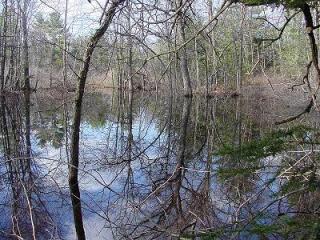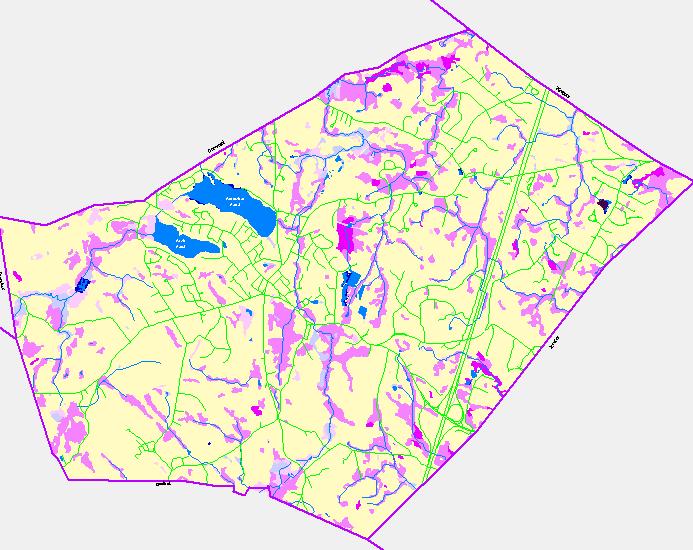The Value of Wetlands

The early settlers of New England regarded wetlands as dark & dangerous, disease-ridden pestilential swamps to be drained and avoided at all costs. In the years since their arrival over 50% of wetland areas have been lost to agricultural, commercial & residential development. So why are we now so eager to protect something that many people would say gives us nothing but mosquitoes?
We know now, through experience and scientific studies, that wetlands protect our health, safety, and property. In their natural state, wetlands provide essential services to the community including flood control, groundwater protection, drinking water purification and habitat for wildlife.
Flood Control
Wetlands act as a natural sponge, temporarily soaking up flooding from rain and spring snow-melt, allowing floods to recede slowly and recharge rivers, ponds and groundwater aquifers. Naturally forested riverfront areas slow flood waters and trap sediment and debris that might otherwise flow unobstructed into our drinking water areas. Wetland plants also slow the flow of water. This delaying action prevents flood waters from rising rapidly and threatening lives and property. In contrast, paved areas cannot absorb water and sometimes can increase storm damage by providing a smooth, impervious surface for water to flow over, which increases the speed of flood waters. Many Georgetown residents have stories of how their properties began to flood for the first time after nearby wetlands were compromised.
Drinking Water Protection
Wetlands are natural water filters. The trees, shrubs and native plants in and around the wetland provide a filtering zone, soaking up run-off from lawns, roads, roofs, and driveways that could contaminate our water with chemicals, fertilizers, oils, heavy metals, salts or solvents. When you remember that our wetland waters are linked to the quality of our drinking water you’ll understand how essential this filtering system is. Some pollutants are held for years in the roots of plants such as arrowhead, cattails, and reed canary grass. Some wetland soils have beneficial bacteria that capture other pollutants like nitrates. Wetland plants also filter sediments and recycle important nutrients.
The degradation and loss of wetlands can also impact the supply of water, resulting in water shortages that require water-use restrictions.
Wildlife Habitat
Many creatures and plants depend on wetlands for their survival. Birds find food and shelter in wetlands during their seasonal migrations. Mammals depend on wetland trees and plants for food and shelter all year round. In Winter you can see the tracks of coyotes, foxes, fisher and other larger predators who visit the ice-covered wetland in search of prey. And in Spring we delight in the calls of frogs who have awakened from their hibernation while turtles migrate to nest in the sandy wetland boundaries.
Here in Georgetown we are host to a number of endangered species who depend on the wetlands for their survival, including the Spotted Turtle, Wood Turtle, Blandings Turtle, Blue-spotted Salamander, and the Four-toed Salamander, as well as a number of wetland plants.
The Wetland Protection Act
The Massachusetts Wetland Protection Act was adopted by the Massachusetts Legislature in the early 1960s out of concern about the degredation and loss of wetlands. Today, Georgetown's wetlands are protected by state and federal laws as well as the local Georgetown Wetland Protection Bylaw.
In this map you can see the paths of Georgetown's streams and rivers as well as the wetlands (marked in shades of pink):


